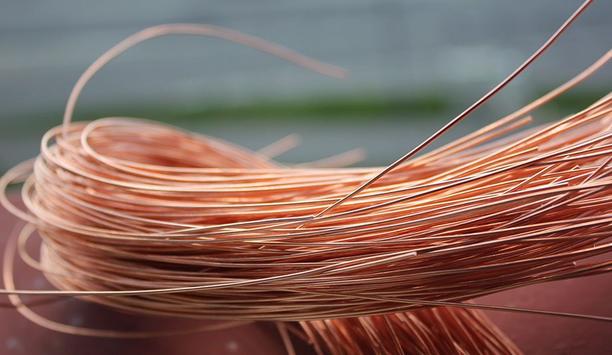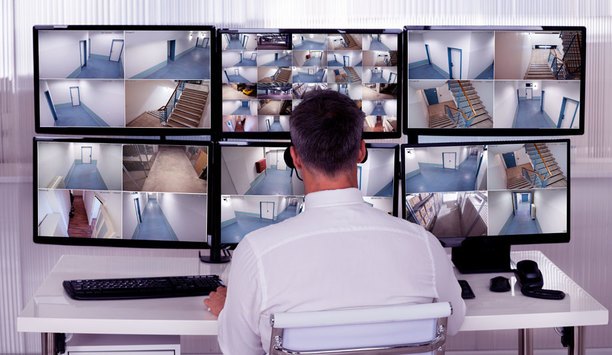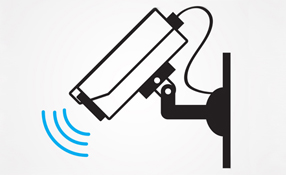Technology & Trends - Cables & cable assemblies
For decades, cable theft has caused disruption to infrastructure across South Africa, and an issue that permeates the whole supply chain. Here, Ian Loudon, international sales and marketing manager at remote monitoring specialist Omniflex, explains how new cable-alarm technology is making life difficult for criminals and giving hope to businesses. In November 2020, Nasdaq reported that, “When South Africa shut large parts of its economy and transport network during its COVID-19 lockdown,...
According to IHS Market, it is estimated that there are over 60 million security cameras in the United States, and other reports say these cameras capture more than four billion hours of footage per week. Over the last decade, IP camera technology has dominated the conversation as it has provided users with a broad offering of enhanced image quality and features. With a large percentage of existing security systems relying on analogue, many end users looking for high definition (HD) video qual...
Atlanta’s new $1.5 billion stadium, home to the NFL Atlanta Falcons football team and MLS Atlanta United football club and site of the recent NCAA national college football championship, is protecting fans, personnel and athletes from terrorists and errant drivers from using vehicles as weapons. While the threat of terrorists planning to attack soft targets, such as stadiums increases, stadium security professionals, such as those at the new Mercedes-Benz Stadium, must look for the weak p...
In 2017, DITEK saw how power surges from the many natural disasters that took place damaged many businesses. In a natural disaster, or even everyday business operations, a facility’s entire investment in security, life safety and surveillance systems technology can be disabled or rendered useless in a few seconds. Surge protection solutions can mitigate those risks and protect security investments. Proactive approach to risk mitigation Throughout 2017, we also witnessed a change in how...
Technology is changing the look and function of today’s security control rooms. Old-school CRT (cathode-ray tube) monitors are giving way to the thinner, flat screen monitors in the control room environment, but the transition is gradual. Randy Smith of Winsted still sees many control rooms that need to make the conversion, which is a boon to his company’s business. Furniture today is designed differently to accommodate the thinner monitors, often with larger screens. Need for inte...
The security market in 2016 saw an uptick in the economy, the introduction of new technologies, increased compliance requirements in key verticals, and rising concerns over the need for greater security. Users interested in upgrading or deploying new systems consistently chose networked system platforms. This trend further drove the demand for adaptive transmission solutions as a means of repurposing existing analogue infrastructure to accommodate IP devices on a networked platform. As this mi...
If one component within the infrastructure changes, other components may need to be changed too Developing a bill of materials for an infrastructure is not difficult if you have the right information. One word of caution: Infrastructures are unique. Each is individual, so don’t depend on drop-down menus; it simply will not work. If one component within the infrastructure changes, take the time to check and see if the rest of the components need to be changed, too. Let&...
IP/PoE systems eliminate the need for local power, thus saving installation costs Cost considerations are an important reason to use existing installed cable as part of a new system infrastructure. Extenders in the form of media converters can help. For almost three decades, video surveillance systems existed in the form of analogue systems. Video coaxial cable was the primary method of transmission with a limited distance of about 750 feet. Analogue systems required separate...
When a manufacturer states a specific PoE power for a camera, always count on the maximum class power source Power over Ethernet (PoE) is an important consideration in IP video security infrastructures, and many people believe Institute of Electrical and Electronics Engineers (IEEE) standards are the last word. However, when it comes to PoE, there is a wide range of both voltages and wattages that can qualify as being within an individual IEEE power class. This applies to both...
Features such as height-adjustable tabletops and adjustable monitor options can fine-tune the workstation The security market is one of the most demanding AV applications. Each environment in the security field presents its own unique set of challenges and requirements that revolve around advanced AV systems and the operators that utilise them. For monitoring and control room operators, that means continuous vigilance with little to no downtime away from their stations. Becau...
The use of multiple wires has advantages for network transmission Network connection to a remote device begins by considering the type of cable. In some cases, installed cable may already be present and available for reuse, or you may have the option to install a new cable. Let’s review the major types of cable used for most security applications, their advantages and disadvantages. Types of cables In general, there are four major types of cable. First is coaxial cab...
This SourceSecurity.com Technology Report will describe one of those analogue HD-over-coax technologies, HDCVI 3.0 by Dahua, which is poised to have a dramatic impact on the video market in the next several years. New capabilities of HDCVI 3.0 include broad compatibility with a range of other (even competing) technologies; higher resolutions including Ultra HD (UHD) or 4K; and intelligent functions comparable to those available in IP systems. What's inside? What is...
With innovation continuing in HD CCTV, analogue video surveillancemay be around for some time What’s your stance on the analogue-to-IP video migration? When will it happen? Will analogue go away entirely? Talk to any security company and they’ll admit they love the simplicity of the installation and setup of analogue cameras. They know how to deploy it quickly, saving labour costs and also, can use the familiar and ever-present coaxial cabling network. That’s...
Wireless surveillance systems are attractive to customersas they are cost-effective and easy to install Various studies, market statistics and forecasts project growth for the surveillance market from 2016 to 2020. Besides needs ranging from traditional analogue cameras to IP network cameras, more and more consumers also have a high interest in intelligent surveillance systems. Along with safety, these systems provide additional details for users in applications such as p...
IDIS was a new name in the security market in 2015, and we asked the company to comment on interesting trends in the market at year-end. Here is that discussion. SourceSecurity.com: How did the economy affect the industry in 2015? Keith Drummond, Senior Director of Sales and Marketing, IDIS America: The surveillance market had been quite resilient as it relates to the overall economy over the 15 years I have been in the industry, and 2015 has been no different. It s...
Ethernet switches are often overlooked andsometimes deemed a cheap connectivity pointwith little to no importance The Ethernet switch is a critical link between cameras, network video recorders (NVRs) and computers that need access to video feeds. The Ethernet switch not only provides the data connectivity but often the power to the IP cameras via Power over Ethernet (PoE). Ethernet switches are the fundamental backbone of a Local Area Network (LAN) and the critical connectivi...
The security industry’s continued migration to networked IP-based systems ensures that PoE will be integral in their design and installation Power over Ethernet (PoE) has without question become the de facto choice of security installers for delivering power to security and access control devices. This should come as no surprise given PoE’s ability to reduce labour and installation costs by delivering power and data over a single cable, thereby increasing overall t...
Just as with network switches, there are no real standards for midspans In general terms, a midspan is a power over Ethernet (PoE) power source that is placed between a network switch and the device being powered, hence the term midspan. The real question is, with almost all network switches providing PoE power, why do we need a midspan? The answer is, in some cases we don’t, but in others we do. As with any other product we have discussed, we need to first consider that...
Differences between standard data applications and the requirements of networks designed for IP video security applications are critical for your system's performance When the need to purchase a network switch arises, many IT directors immediately turn to two favourites, HP or Cisco. They have become to the networking environment what IBM was to computers: “No one ever got fired for buying IBM.” Certainly, switches play a crucial role in enhancing your network by i...
The action of a voltage applied to a resistance element, draws power from the switch’s PoE port We often think about a power supply operating in a single format. A power source provides power to a device. You plug it into a wall outlet and that’s all that happens. PoE power is a far more complex. There is interaction between the source providing power and the device receiving power. This interaction is governed under the 802.3 AF and AT standards. These differences...
Transmission of video and PoE power for IP security cameras over infrastructures can be confusing. Network infrastructures are designed using twisted pair cabling that we refer to as CAT (short for Category) cable, also referred to as UTP (Unshielded Twisted Pair). Security systems, coming from an analogue environment, have historically transmitted over coax cable, and with the use adaptors can transmit over CAT cabling, which can be further broken down into single pair twist...
The number-one cause of most power outages in the U.S. is bad weather What does the industry consider to be its most severe threats the U.S. electric grid? There is no shortage of nightmare scenarios. According to the Department of Energy, the number-one cause of most power outages in the U.S. is bad weather, which costs the economy between $18 billion and $33 billion every year in lost output and wages, spoiled inventory, delayed production and damage to grid infrastructure....
PoE has redefined how security professionals design and deploy systems The migration from analogue infrastructure to networked systems continues to gain traction at a rapid pace given all the inherent benefits networked technology provides for video surveillance and security applications. However, there are costs involved and they can be significant, especially if the move to networked infrastructure requires the removal of existing wiring and the installation of new Ethernet...
Fibre optics enhances the operation and business bottom line of surveillance solutions Designers and end users of security systems, integrators and installers must consider and balance the functionality required of a video surveillance camera with its methods of transmission. This is the first of a 3-part examination by Mark Wilson, Marketing Vice President of Infinova, of how chief security officers (CSOs), directors and managers can understand the benefits of and...
Bandwidth is an important consideration for CCTV systems to reach their full potential Most surveillance systems today transmit data over IP networks. As manufacturers continue to improve the capabilities of CCTV systems, the amount of traffic travelling on a network becomes increasingly large. Bandwidth is a key consideration in managing surveillance systems and ensuring their full potential is reached. In this article, Bosch discusses the importance of bandwidth and ho...
To obtain complete security on sites night time surveillance must factor as high priority Today, the challenge to video surveillance professionals is to make sure that the CCTV video footage is effective on a 24/7 basis throughout the year. Securing an area during the daytime is one thing. But what happens during the night? And in weather conditions like fog, rain and snow? What can be detected if the sun blinds CCTV cameras? Flir Systems explains.As CCTV systems be...
Related videos
Time challenge: installation of battery powered Aperio cylinder
IDIS launches efficient AI-powered security camera range
Hikvision introduces DS-K1T342-E1 Series PoE power supply
- View more IP Dome cameras
- IP Dome cameras
- IP cameras
- Audio, video or keypad entry
- Network video recorders (NVRs)
- CCTV cameras
Dahua DH-CS4010-8GT-60 10-Port Cloud Managed Desktop Switch with 8-Port PoE
Verkada TD52 Cloud-Based Video Intercom
exacqVision IP08-64T-R1XW-E X-Series 1U Rdnt IP NVR 64TB RAID5 Windows OS with 8 IP Ent Lic
Multi-residential access management and security
DownloadGuide for HAAS: New choice of SMB security system
DownloadPrecision and intelligence: LiDAR's role in modern security ecosystems
DownloadHikvision: Solar powered product introduction + HCP
DownloadArtificial intelligence
Download





































